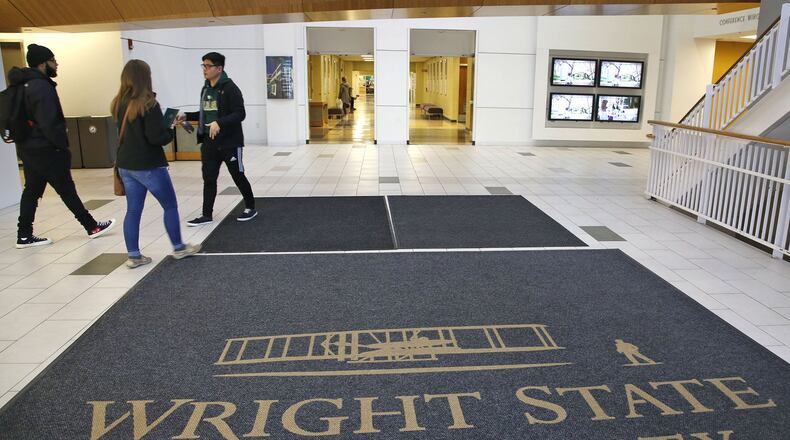Wright State received a score of 2.2 out of five in fiscal year 2018 on Ohio’s “Senate Bill 6” scores, the state’s way to measure every public college’s fiscal health, according to state documents. The rating from 0 to 5 is based on three parts: the schools reserve fund, its ability to service its debts and its income ratio.
»RELATED: Need to return an Amazon package? Soon you'll be able to return it at area Kohl's stores
In fiscal year 2017, the university’s score was 0.8. Two consecutive years of a score below 1.75 puts universities on state fiscal watch, which requires strict oversight and a recovery plan submitted to the Ohio Department of Higher Education.
WSU has overspent from its reserve, or rainy-day fund for years. Now it needs to rebuild, said Doug Fecher, WSU’s Board of Trustees president.
The board asked Wright State leaders to add $6 million to the reserve in fiscal year 2018. The university was able to come up with $10 million by cutting expenditures in 2018 by $53 million compared to the previous year. The administration asked departments to cut operating budgets for non-personnel items, limited travel and put processes in review that required high-level approval to fill positions.
The cuts were a cultural change, Branson said. Before if there wasn’t enough money in a department’s budget to take on an initiative, the reserve funds would be used.
»RELATED: Kroger sells off popular ice cream and tea brand
“When you’re in this changing environment —enrollment goes down, a program closes, or demand ceases or something like that — you rely on your reserves to build back revenue in other areas…Without those reserves, we just didn’t have the flexibility,” Branson said.
Wright State’s score also boosted because for the first time since 2011, the university showed a positive balance, meaning the university didn’t spend more than its revenue, he said.
This year the university is expecting to add $6 million to the reserve, double the $3 million the Board of Trustees asked for in its oversight, Branson said.
That would bring the total spendable dollar value in WSU’s reserves to somewhere between $30 million and $40 million. A good rule of thumb nationally is to have about 25 percent of the total operating budget of a university in the reserve, Branson said.
About 25 percent of Wright State’s $276 million operating budget would be about $69 million, which could take about five to 10 years to secure, Branson said.
»BIZ BEAT: Local Burger King restaurant closing at end of month
Some years the fund may not grow, depending on investments Wright State may use the money for that would be promising for larger returns, said a school spokesman.
“The future will all depend on the ability of the university to continue attracting students to be able to continue building those reserves,” Fecher said. “…It’s all about enrollment, so the financial oversight, it wasn’t a temporary thing. It’s how the university operates now.”
Many mid-sized, regional universities have struggled with enrollment as the number of high school graduates declines and parents contemplate the value of a degree compared to the cost, Fecher said. No official decisions have been made, but he said the administration and board are focusing on maximizing the value of a degree and attracting students.
Wright State’s full-time enrollment dropped 13 percent from fiscal year 2012 to 2018. The school’s current enrollment is 15,588.
The university is focusing on initiatives to offer more online courses, especially for face-to-face classes that are wait listed. It’s also looking into new revenue sources by meeting with deans to grow revenue at the college and department level.
“We’re not out of the woods, but we can see the path out,” Branson said.
FIVE FAST READS
• Owner of Kay Jewelers, Jared plans more than 150 closures
• Payless to begin laying off last of its employees at giant area warehouse
• Grocers competing for customers, cost savings with ‘green’ initiatives
• Local woman among thousands reporting scams by fake debt collectors
•PHOTOS: Local, historic octagon-shaped house on market for first time in 35 years
About the Author
